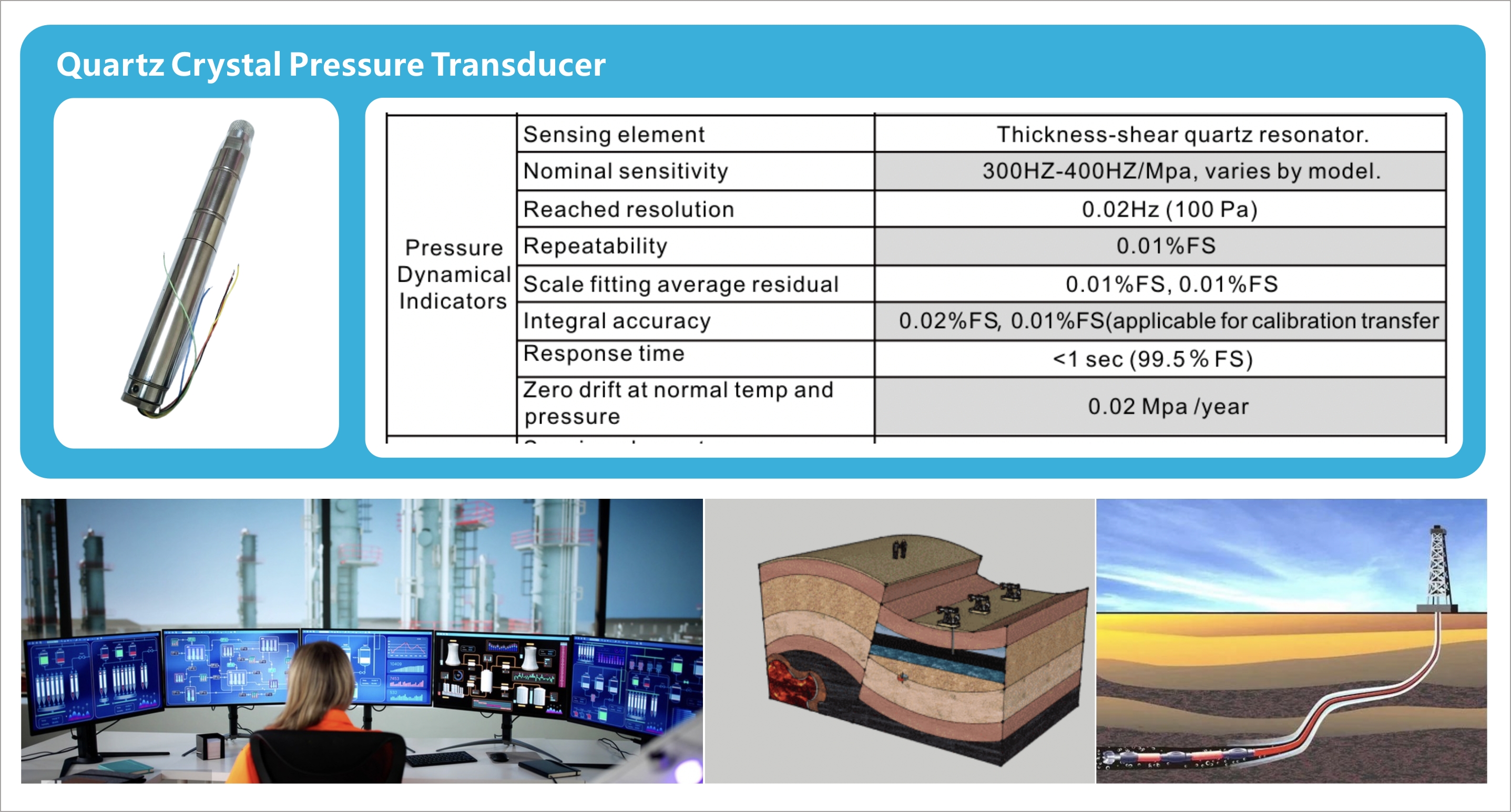Views: 3 Author: Site Editor Publish Time: 2025-06-03 Origin: Site












In the entire industrial chain of petroleum exploration, production, storage, transportation, and refining, extreme environments and complex working conditions impose the highest industrial standards on the accuracy and stability of pressure sensors. These requirements are directly related to the safety, efficiency, and economic efficiency of oil and gas development.
.Measurement Accuracy:
Mainstream quartz crystal pressure sensors are required to achieve ±0.02%FS~±0.1%FS (FS = full scale), which is 2-5 times higher than that of traditional strain-type sensors (±0.2%FS~±0.5%FS).
· Resolution:
Reaching 0.0001psi (approximately 0.7Pa), equivalent to detecting pressure changes generated by a 1-meter column of water. This meets the requirements for laboratory-grade core permeability testing (under conditions of 200°C and 100MPa, the resolution must be <0.001%FS).
2.Analysis of accuracy requirements in typical scenarios
Application | Core parameter | Risks of failing to meet accuracy standards | Advantages of quartz sensors |
Bottom Hole Pressure Monitoring | Measuring range: 0~300MPa, Accuracy :±0.05% FS. | The delay in kick/leakage warning exceeds 30 seconds, increasing the blowout risk by 30%. | With a response speed of 10ms, it provides an early warning 40 seconds in advance. |
Reservoir dynamic analysis | Static pressure measurement accuracy : ±0.1% FS. | The numerical simulation error exceeds 5%, leading to the failure of the water injection scheme | Annual drift < 0.1% FS, ensuring long-term data reliability. |
Refinery Reactor Monitoring | High-pressure measurement accuracy :±0.2% FS. | The misjudgment rate of overpressure protection exceeds 10%, increasing the risk of explosion. | Designed with H₂S corrosion resistance, the alarm accuracy rate reaches 99.5%. |
· Temperature Stability:
· Maintains temperature drift ≤ 0.01% FS/℃ across a wide temperature range of -50°C (Arctic drilling) to 225°C (high-temperature deep wells), far superior to traditional sensors (> 0.1% FS/℃).
· Equipped with temperature compensation algorithms to achieve joint pressure-temperature calibration (e.g., in refining units, combining ±0.1°C temperature measurement accuracy to control pressure conversion errors within ±0.05% FS).
· Long-Term Stability:
· Annual drift < 0.1% FS, just 1/10 to 1/20 of traditional sensors (annual drift 1% FS~2% FS).
· Vibration and Shock Resistance: Passes 50g acceleration shock tests (ISO 16750 standard), maintaining zero drift in scenarios such as drilling platforms (vibration amplitude ±5g) and fracturing fleets (high-frequency vibration), avoiding signal distortion caused by vibration (traditional sensors may exhibit vibration drift rates of up to 0.5% FS/g).
Conclusion: Redefining the 'Ceiling of Accuracy and Stability' for Industrial Sensors
The requirements for the accuracy and stability of pressure sensors in the oil industry fundamentally stem from the urgent need for "reliable decision-making in extreme environments":
· Accuracy: Must reach aerospace-grade measurement standards (±0.02% FS) to capture subtle dynamics of oil and gas reservoirs, supporting core processes such as reserve evaluation and fracturing optimization.
· Stability: Must surpass military-grade environmental limits (-50°C to 225°C, 300MPa pressure resistance) to achieve maintenance-free operation for over 10 years, ensuring continuous reliability in "unattended" scenarios like deep wells and offshore platforms.
These "double-high" requirements have made quartz crystal pressure sensors a "must-have product" in the oil industry. Their technical parameters are not just performance indicators but also the "lifeline" for ensuring the safe and efficient development of oil and gas.